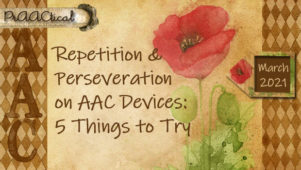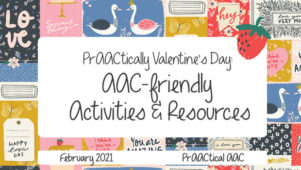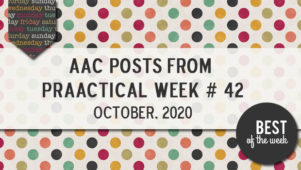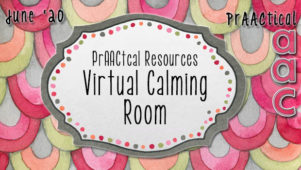How I Do It: Planning AAC Therapy Activities Across Grade Levels
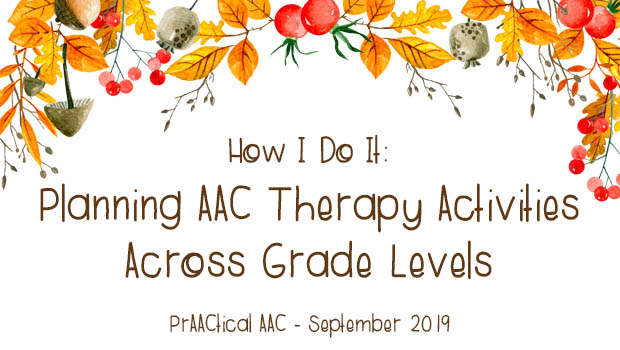
 AAC SLP Amanda Samperi is back with another post in her series about the prAACtical aspects of AAC therapy. In this post, Amanda shares her views and experiences on helping students with AAC needs build their language skills.
AAC SLP Amanda Samperi is back with another post in her series about the prAACtical aspects of AAC therapy. In this post, Amanda shares her views and experiences on helping students with AAC needs build their language skills.
You can see her previous posts in this series here.
:::::::::::::::::::::::::::::::::::::::::::::::
How I Do It: AAC Therapy is Language Therapy
I’ve traveled between several states and many different schools over the past few years. Because of this, I’ve had the privilege of working with some amazing SLPs! They’re talented, strong, creative, and love their kiddos more than anything. And just like any other team, each of us has different strengths and weaknesses. When I’m joining a Speech team, there’s usually at least one other SLP with specialties that are outside of my wheelhouse. However, she isn’t very comfortable with AAC.
It sounds similar from place to place:
- “I’m so glad you like to work with these devices because I have no idea what to do with them.”
- “What does AAC therapy even look like??”
- “I just don’t even know where to start with AAC.”
Responses like that are okay because the SLP field is so large! We can be an expert in every single niche. Personally, AAC is my jam, but please don’t ask me to do anything with feeding and swallowing. If you’re feeling this way about AAC, you’re in the right place! Let’s see how to incorporate AAC into therapy sessions.
Remember AAC is ultimately an access method for language
At the end of the day, AAC is meant to increase receptive and expressive language. This means that we can use strong language lessons with our users of AAC with minimal to no modifications. Although the lesson plan may require some modifications based on the individual’s needs and interests, the lesson shouldn’t be completely altered simply because “AAC” is in the picture.
Designing the Environment
Visual supports are fabulous, wonderful, an almost-magical tool that can allow us to fade direct verbal and visual prompting for users of AAC across environments, including the therapy room, classroom, and around the home.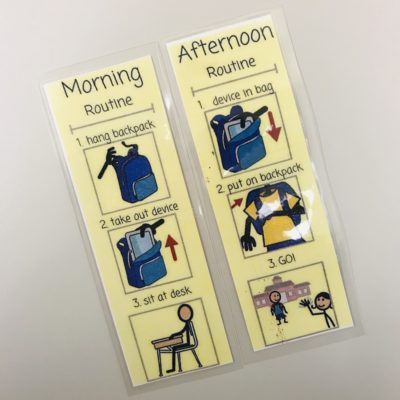
These visuals can take many forms and provide a variety of services. They can aid in executive functioning skills like planning and following routines (see visual schedule above). They can also include symbols to prompt expressive language (using verbal language or AAC). Visuals can even be used as pacers to mark MLU or rate of speech.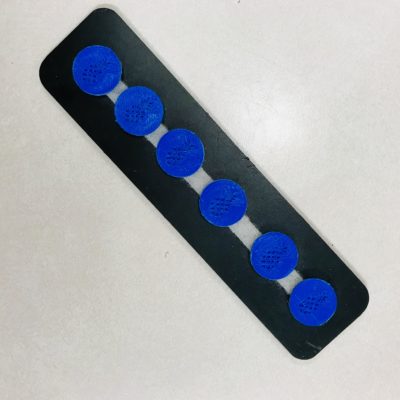
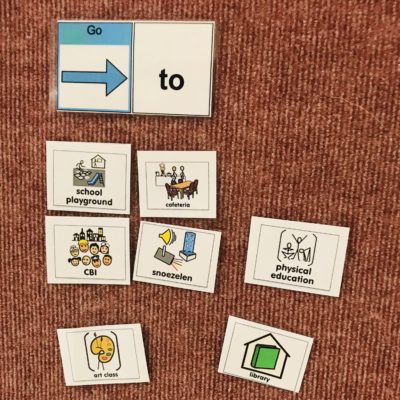
Keep in mind that, especially in the younger grades, any visual supports placed in the student’s environment will not only benefit your specific student, but also the others in that environment. For example, I created a visual schedule (see above) for my students with devices to remind them to unpack their AAC device when they arrive at school. However, this visual can also help another student who is easily distracted and can’t remember what to do once he gets to the cubbies. UDL at it’s finest!
AAC in small group language therapy
Users of AAC can participate in small group therapy with the correct structures and supports. While they may require additional personnel and/or accommodations, users of AAC can and should participate with their peers while learning. Just like any other small group, instruction should be based on the students’ goals and objectives. This can be done with the same story and activity! For example, if one student is working on pronouns and another is targeting the use of core vocabulary, both can work on pronouns together! Use the same book, videos, games, and toys to teach pronouns for each student, while addressing necessary modifications for accessibility as necessary.
Expanding Utterances
One of the hallmarks of language therapy involves targeting expansion of utterances, particularly beyond the one-word level. This is also a hallmark of therapy involving users of AAC! When working on this goal with AAC, it’s important to remember to model both verbally and on the student’s device (rather than using verbal language only). Remember to model for a variety of communicative functions (requesting, protesting, asking questions, sharing information, making comments, etc.), just as you would when working with a verbal student.
Make it FUN!
A few weeks ago, I talked about making sure to keep things fun while working with AAC! This is so important for so many reasons. Communication is significantly more challenging for users of AAC when compared to their typically developing peers. Also, these students are frequently tested rather than conversed with (i.e., “What day is it today, Bobby?” vs. “How are you today, Bobby?”). If interactions with others involving AAC devices aren’t enjoyable, meaningful, powerful, or fun… why would the student be motivated to use it?? When daily interactions and therapy sessions involving AAC devices are missing these key components, device abandonment is on the horizon. It is imperative that language lessons are fun AND functional!
Lower Elementary
For lower elementary students, I love using a combination of books, videos, songs, fine motor, and gross motor activities. I typically stick with a theme for a week or two weeks, depending on what the schedule looks like and what the classroom is doing. Especially in PreK, many classrooms have a theme that is woven into lessons and play throughout the week. Try connecting with a teacher to tie your lesson plans to these weekly themes! It provides students with previous knowledge of curriculum, promotes generalization, and makes push-in therapy much easier!
Below are some lesson ideas that I’ve done alongside the classroom’s “Spring” theme: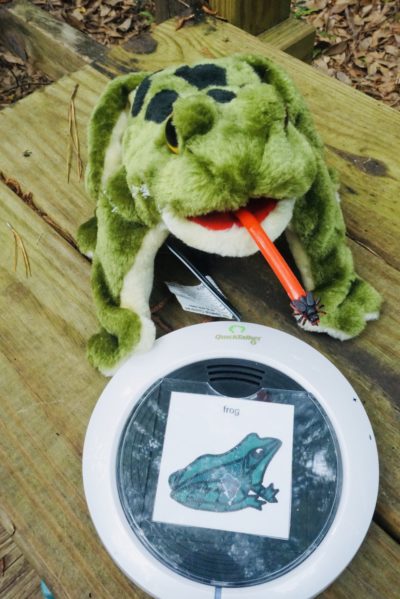
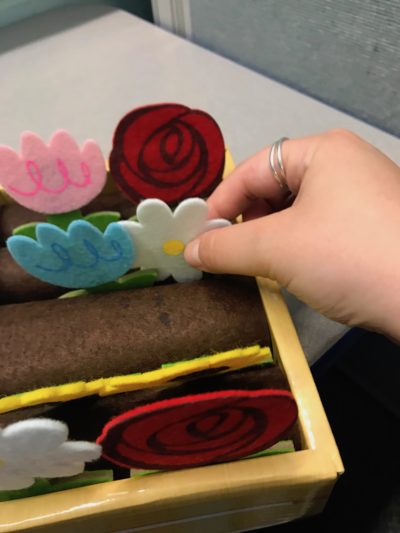
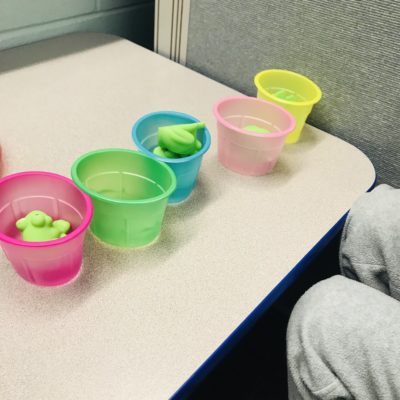
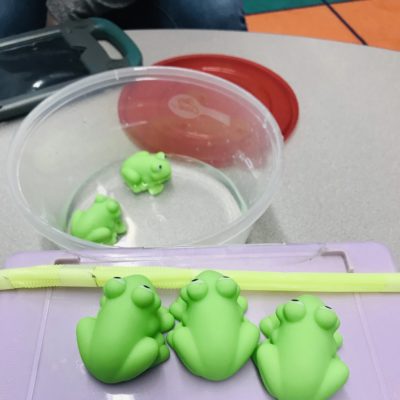
Upper Elementary
In upper elementary, it’s still really important to play! I had several games in my room that were absolute staples:
- The floor is lava
- Bowling
- Fort making (with cardboard bricks)
- Building blocks
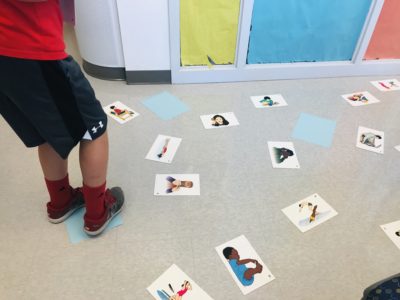 These can be used with almost any language group and somehow manage to incorporate a variety of language objectives. Have someone working on articulation and another practicing turn-taking? Tape articulation cards to the water bottles and take turns bowling!
These can be used with almost any language group and somehow manage to incorporate a variety of language objectives. Have someone working on articulation and another practicing turn-taking? Tape articulation cards to the water bottles and take turns bowling!
Middle School
Middle school can be a tricky place because students are beginning to despise things, and it’s hard to make things “fun” and “appealing” rather than “… whatever.”
One thing that’s always fun: messy science experiments!
- Old fashioned volcano with vinegar and baking soda
- Slime
- Homemade snow (shaving cream and baking soda)
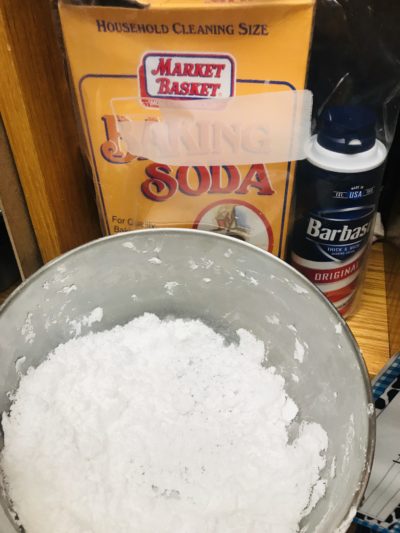
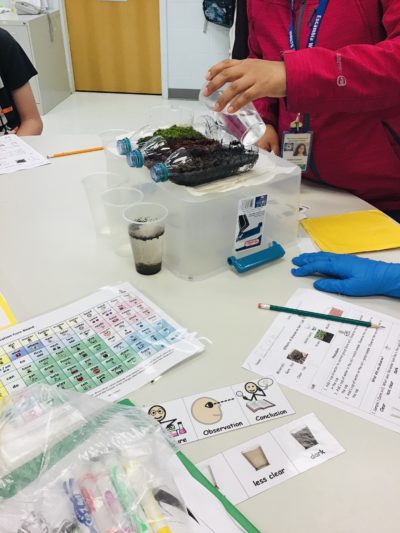 During these experiments, make predictions, talk about outcomes, compare results, and make social comments! This is supposed to be fun!
During these experiments, make predictions, talk about outcomes, compare results, and make social comments! This is supposed to be fun!
Check out this page for other science experiments for middle schoolers!
High School
Ah…high school. Now everything is “…whatever”! Don’t take it personally – it’s developmental.
My high school class recently started implementing VR – virtual reality – into daily social studies lessons. You can use Google Earth VR to immerse your students in a completely different part of the world! Use this opportunity to:
- discuss similarities and differences compared to their homes
- identify the things you most like and dislike about this new area of the world
- plan a fictional trip there – Where would you go? What would you see? What would you pack?
Also, if the Google Earth VR is pulled up on a tablet or in the Google Cardboard, it can be an interesting sensory experience!
Vocational
At my school, we have several vocational classes for students who qualify. Within these classes, student practice a variety of important job-oriented tasks, including counting and exchanging money, using social language with familiar people and strangers, following multi-step directions, tasks initiation and competition, and many more. One of the classes involves cooking, which is an important life skill! This involves many topics for language therapy sessions, including:
- Kitchen safety
- Choosing a recipe (likes and dislikes of the group)
- Shopping at the store for ingredients
- Talking about the kitchen appliances – How to they work? What do they do?
- Baking the actual recipe
- Role play with store to sell items
Reach out to family members and teachers
SLPs are communication specialists, but sometimes we lose sight of the importance of communication! I know that I can. Thankfully, in schools, we have IEP meetings, progress reports, and open house events to help connect families and therapists. In the private setting, we typically have time at the end of every session to briefly chat with family members. This is a great time to ask about parental concerns so that they can be addressed and incorporated into therapeutic goals as appropriate (i.e., within the student’s zone of proximal development and as best meets the needs of the child).
Student expectations
After working with a student for several sessions, therapists have a good sense of what a child is able to do independently, where the child requires some prompting, and where the child is fully dependent on adults. The child’s “Plan of Care” or IEP should delineate this information as well. It’s important to continue relaying this information to caretakers, family members, and school staff as the student progresses.
For example: “Johnny can accurately and independently use his device to request a drink of water, so please provide him the necessary wait time and opportunities to do so throughout the school day and with a variety of people. However, Johnny’s not yet bringing his device with him everywhere, so please scaffold this task by providing wait time, showing him a gestural cue towards other student’s talkers, and using the provided visual cue.”
Bringing it all together
Overall, it’s important to remember that AAC therapy is language therapy. It can be done effectively utilizing engaging and meaningful activities. It’s imperative to communicate expectations and progress with family members and school staff on a regular basis.
Want to learn more about how I get back-to-school ready? Check out the first and second articles in this series!
Filed under: Featured Posts, PrAACtical Thinking
Tagged With: AAC activities, language therapy
This post was written by Carole Zangari

